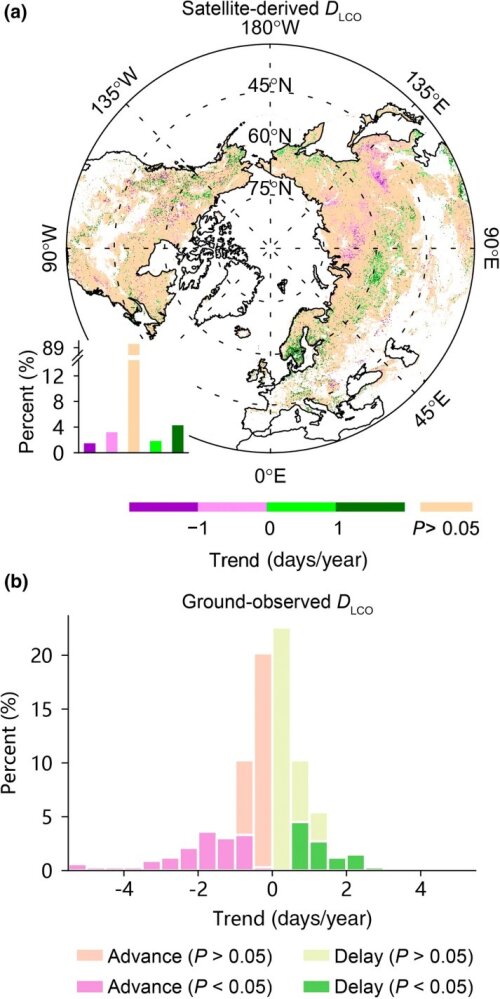Climate change does not delay the start of autumn leaf coloration, but its speed
With the start of autumn, as temperatures drop and days get shorter, leaf senescence takes place in deciduous trees. The process of leaf senescence has mostly been studied through monitoring leaf coloration. Over the past decades, multiple studies have investigated whether climate change has altered the timing of leaf coloration, identifying clear delays, with strong impact on the ecosystem. Such impacts include changes in the amount of carbon captured by trees and the effect on species that depend on leaves for food. The initiation of autumnal leaf senescence is also crucial for plant overwintering, as it affects the amount of essential leaf nutrients that trees can recover before leaf fall.

People have always been fascinated with the seasons, and autumnal leaf coloration is one of the most apparent natural processes in this regard. (Photo: Mario Dobelmann, Unsplash.com).
Previous studies focused mainly on the advanced stages of leaf coloration, for example when 50% of the leaves have turned yellow. A bit surprisingly, the effect of climate warming on the timing of the actual onset of leaf coloration, which is the earliest visual sign of senescence, was not studied in detail. An international consortium of environmental scientists have now filled this knowledge gap. The consortium was led by researchers from the Institute of Tibetan Plateau Research in China. For UAntwerpen, Matteo Campioli (Global Change Ecology Centre, Research Group Plants and Ecosystems) participated. Matteo Campioli has strong experience in the study of plant phenology (=plant seasonal processes), leading e.g. a large European study on leaf fall.
Campioli: “We studied the onset of leaf coloration in the Northern Hemisphere, in a large area that spans from North American over Europe and Russia to China. We used high-resolution satellite data from the MODIS observation programme, that allows to study the specific moment of leaf coloration onset over large areas. We could clearly distinguish natural vegetation from e.g. croplands and urban areas. Once we obtained the satellite data, we validated them rigorously with on-ground visual observations and using advanced camera systems, so called PhenoCams.”
The researchers came to a remarkable conclusion. The delay in autumn coloration so far observed is not due to a later start of the process (which appears rather constant across years), but rather due to a slower progression and late end. Therefore, the later phases of autumn coloration are far more sensitive to temperature than the actual onset of the coloration process.
This means that warming leads to an extension of the duration of leaf senescence, but does not change the actual initiation of the process. This clearly separates autumn process from e.g. the outbreak of leaves in spring, which occurs earlier with warmer temperatures. For autumnal coloration, day length appears as the strongest trigger. Campioli: “Our study shows the very different controls on leaf dynamics in spring and autumn. This observation is crucial to improve our climate models: to simulate the start of autumn processes we can now focus on day length, with temperature steering mainly the progress rate and the later phases of the coloration.”

Summary figure from the research paper. Over 90% of the deciduous ecosystems in the North hemisphere were not affected by climate warming if the onset of leaf coloration was considered. Instead, climate warming clearly affected the duration of the coloration period before eventual leaf fall. In the rare cases that coloration onset was affected by temperature, delays as well as advances were observed.
Link to research paper: https://onlinelibrary.wiley.com/doi/10.1111/geb.13581